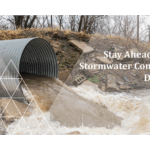
One of the most important steps in any property transaction is conducting a Phase 1 Environmental Site Assessment (ESA). This assessment helps identify potential environmental contamination issues on a property and assesses the risks associated with them. In Killeen, Texas, Phase 1 ESAs are particularly crucial due to the area’s industrial history and the potential for environmental hazards.
Understanding the Importance of Phase 1 Environmental Site Assessments
Phase 1 Environmental Site Assessments (ESAs) play a critical role in property transactions by providing potential buyers, lenders, and investors with valuable information about the environmental condition of a property. These assessments are not just a formality; they are a crucial step in ensuring that all parties involved have a comprehensive understanding of the potential risks and liabilities associated with the property.
By conducting a thorough assessment, stakeholders can make informed decisions and mitigate any risks associated with environmental contamination. This is particularly important in today’s world, where environmental concerns are at the forefront of many discussions. The information obtained from a Phase 1 ESA can help buyers negotiate appropriate purchase prices, secure financing, obtain insurance coverage, and plan for any necessary remediation or mitigation measures.
The Role of Environmental Site Assessments in Property Transactions
Environmental site assessments are essential in property transactions as they help identify any potential environmental liabilities that may affect the property’s value or intended use. These assessments provide a comprehensive understanding of the site’s environmental history, current conditions, and the potential for contamination.
Imagine a scenario where a buyer purchases a property without conducting a Phase 1 ESA. Later, they discover that the property was previously used as a chemical storage facility, and there is evidence of soil and groundwater contamination. This discovery not only poses a significant financial burden for the buyer but also raises potential health and safety concerns. By conducting a Phase 1 ESA, these risks can be identified and addressed before the transaction takes place, protecting all parties involved.
Key Components of a Phase 1 Environmental Site Assessment
A Phase 1 ESA involves several crucial steps to ensure a comprehensive evaluation of a property’s environmental condition. These steps are meticulously carried out by qualified environmental professionals who have the expertise and knowledge to identify potential risks and liabilities. Some of the key components of a Phase 1 ESA include:
- Site inspection and historical review: A qualified environmental professional conducts a thorough visual inspection of the property and reviews historical documents to identify any potential sources of contamination or recognized environmental conditions (RECs). This includes examining the property’s past uses, neighboring properties, and any nearby industrial activities that may have contributed to contamination.
- Regulatory records review: The environmental professional reviews regulatory databases, permits, and records to determine if any previous activities on the site may have caused or contributed to contamination. This step helps uncover any potential violations or non-compliance issues that may have occurred in the past.
- Interviewing property owners and occupants: Gathering information from current and previous owners or occupants of the property can provide valuable insights into potential environmental hazards or contamination events that may have occurred on the site. This step helps fill in any gaps in the historical record and provides a more comprehensive understanding of the property’s environmental history.
These are just a few of the many components involved in a Phase 1 ESA. Each assessment is tailored to the specific property and its unique characteristics. The goal is to leave no stone unturned and provide a comprehensive evaluation that allows all parties involved to make informed decisions.
The Process of Conducting a Phase 1 Environmental Site Assessment in Killeen
Conducting a Phase 1 ESA in Killeen follows a systematic approach to ensure a thorough evaluation of the property’s environmental condition and compliance with regulatory requirements.
Initial Site Inspection and Historical Review
The first step in a Phase 1 ESA is conducting a visual inspection of the property, including its buildings, structures, and surrounding areas. The environmental professional looks for any signs of potential environmental contamination, such as underground storage tanks, hazardous materials, or evidence of past industrial operations.
Simultaneously, a historical review is conducted to gather information about the property’s previous ownership, land use, and any environmental incidents or permits related to the site. This review helps identify any potential RECs or areas of concern.
Regulatory Records Review
Following the site inspection, the environmental professional conducts a thorough review of regulatory databases, permits, and records to identify any past or current activities that may pose potential environmental risks. This includes searching for permits related to chemical handling or storage, underground storage tanks, or any other regulated activities that may have occurred on the property.
Interviewing Property Owners and Occupants
To gather further insights about the property’s environmental history, the environmental professional interviews current and previous property owners as well as tenants or occupants. These interviews aim to identify any potential environmental incidents, spills, or other activities that might have resulted in contamination.
Interpreting the Results of a Phase 1 Environmental Site Assessment
Once the Phase 1 ESA is complete, the environmental professional will compile a report detailing the findings and their interpretations. This report typically includes:
Identifying Recognized Environmental Conditions (RECs)
The Phase 1 ESA report identifies any RECs discovered during the assessment. RECs are the presence or likely presence of any hazardous substances or petroleum products on a property that may potentially impact human health or the environment. Identifying RECs is crucial for determining the need for further investigation or remediation.
Evaluating the Impact of RECs on Property Value
The report also evaluates how the identified RECs may impact the property’s value and overall suitability for the intended use. Potential financial, legal, and regulatory implications are considered, providing stakeholders with a comprehensive understanding of the risks associated with the property.
Next Steps After a Phase 1 Environmental Site Assessment
After completing a Phase 1 ESA, there are essential considerations and actions to take to ensure responsible property management and minimize potential risks.
When is a Phase 2 Environmental Site Assessment Required?
If the Phase 1 ESA report identifies significant RECs or areas of concern, a Phase 2 ESA may be recommended. A Phase 2 ESA involves sampling and laboratory testing to determine the extent and severity of contamination, providing a more detailed assessment of potential risks.
Mitigation Strategies for Identified Environmental Risks
If the Phase 1 ESA identifies environmental risks, stakeholders should work with environmental consultants to develop and implement appropriate mitigation strategies. This may involve remediation efforts, regulatory compliance measures, or ongoing monitoring plans to address the identified risks and minimize their impact.
Frequently Asked Questions about Phase 1 Environmental Site Assessments
How Long Does a Phase 1 Environmental Site Assessment Take?
The duration of a Phase 1 ESA can vary depending on factors such as the size and complexity of the property, the availability of information, and the accessibility of the site. However, a typical Phase 1 ESA can be completed within four to six weeks.
What is the Cost of a Phase 1 Environmental Site Assessment in Killeen?
The cost of a Phase 1 ESA in Killeen depends on various factors, such as the size and location of the property and the scope of the assessment. Generally, Phase 1 ESAs can range from a few thousand dollars to tens of thousands of dollars. However, the cost of an assessment should be weighed against the potential risks and liabilities associated with the property.
In conclusion, conducting a Phase 1 Environmental Site Assessment in Killeen is crucial for property transactions in the area. By understanding the importance of these assessments, the process involved, and the interpretation of their results, stakeholders can make informed decisions, minimize risks, and ensure responsible property management.
Understanding the complexities and potential risks of environmental liabilities is essential for any property transaction in Killeen. ESE Partners is dedicated to guiding you through the intricacies of Phase 1 Environmental Site Assessments with our expert team of environmental engineers and scientists. With a commitment to responsible environmental problem solving and a deep knowledge of local regulations, we ensure that your business moves forward securely and sustainably. Don’t let environmental concerns stand in the way of your property’s potential. Request A Proposal today and partner with ESE Partners for thorough, quality-driven environmental services that recognize opportunities and enhance the community’s quality of life.








